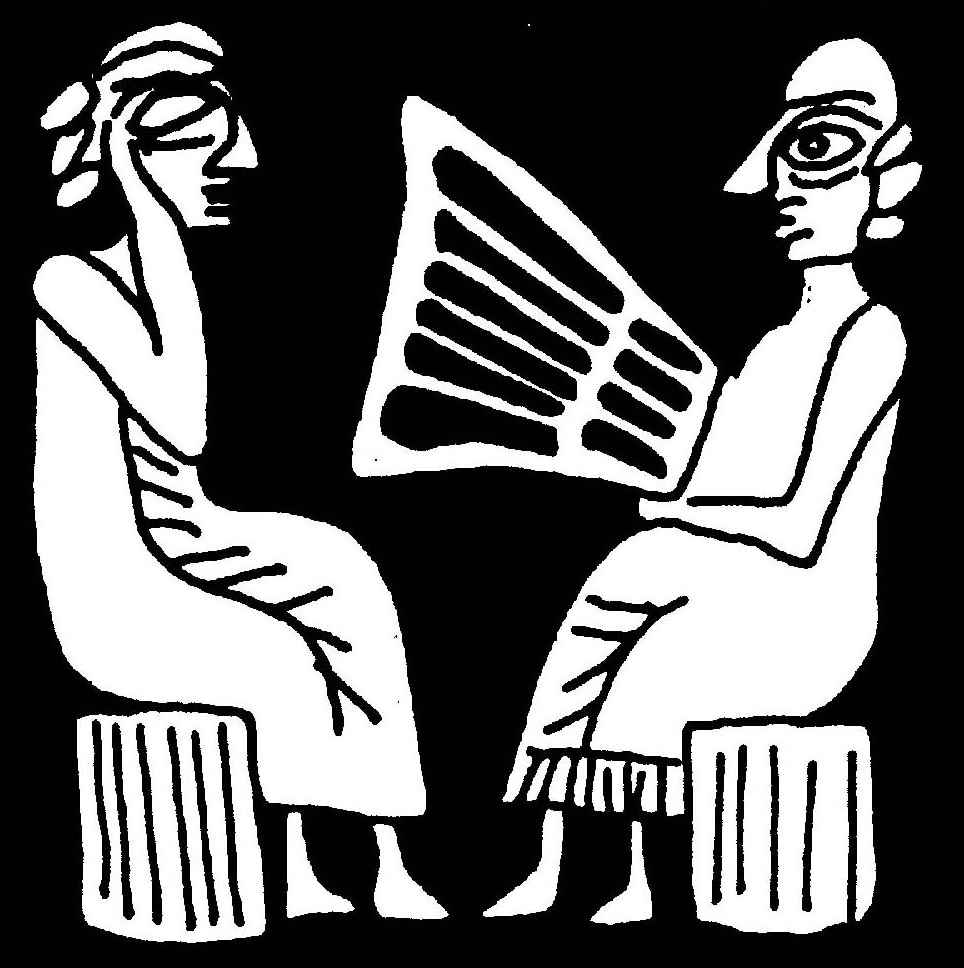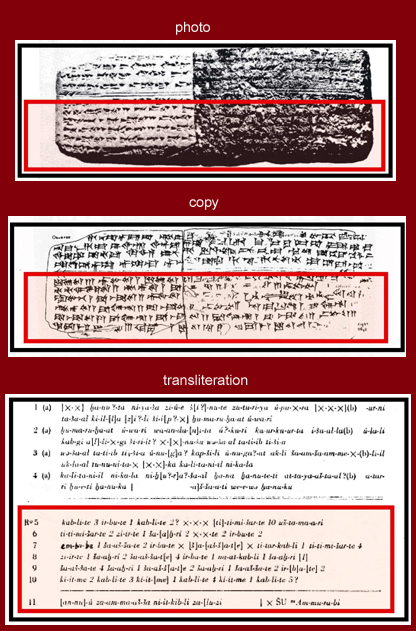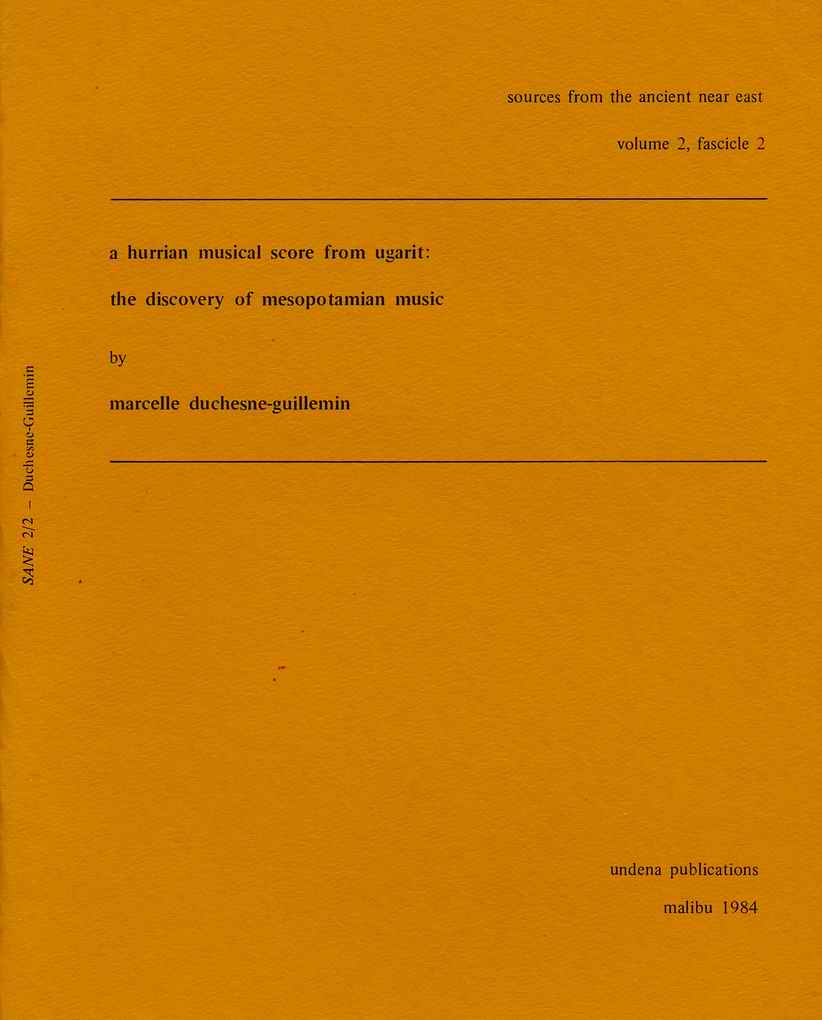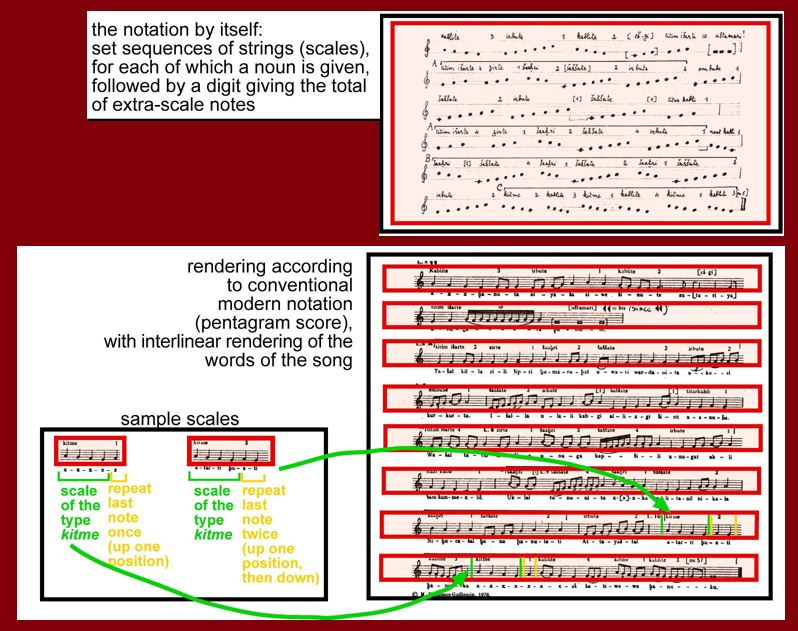Overview
|
We have three witnesses that echo, in very different ways, the sound of Hurrian instruments and voices. The first is the mute testimony of figurative art (as in the case of sealings, e.g. q4–DAM a, portraying a lyre player; cf. also q5–DAM b, q6–DAM c, q7–DAM d, and q8–DAM e; see below). It shows us performers and instruments, and it tells us about the social setting within which the performance occurred. (Related to the figurative evidence, but not yet attested at Urkesh, is the written evidence that gives us names of instruments, songs or singers.) The second evidence conjures up for us, from a written code, the sounds that were once played. This is one of the most remarkable discoveries to come out of ancient Near Eastern studies: the re-capture of ancient sounds that come to life when reading the equivalent of an ancient score. They are not from Urkesh (see, e.g. below the tablet with musical score from Ugarit), but they record later Hurrian tunes that may well have been rooted in an ancient tradition reaching back to the time of Urkesh. Finally, we have the recovery of actual instruments. The evidence from Urkesh is so far extremely limited, but it holds nevertheless a special fascination. |
Music in the Urkesh palace
A seal of queen Uqnitum (q4–DAM a) gives us a glimpse of a musical performance such as would have taken place in the royal palace of Urkesh. |
A singer and a lyre player face each other. Seated on a stool, they are shown in the act of performing for the listening pleasure of the queen and her entourage. The sound you hear is a modern rendering of a Hurrian hymn such as you might have heard had you been part of the queen's entourage.
|

|
A tablet from Ugarit
A tablet found at Ugarit, and dating to the 13th century B.C., contains in the upper portion the text of Hurrian hymn. |
In the lower portion (highlighted in red) it contains a series of numbers and technical terms that have been interpreted as a score rendering the tune to which the hymn would have been sung. This is then the earliest known musical score in history. It is significant that it was used to render a hymn composed in Hurrian – at a time when Hurrian was beginning to die out, as if in an attempt to preserve something that was deemed especially precious. [Further information in Güterbock, H.G. 1970, "Musical Notation in Ugarit", Revue d'Assyriologie et d'archéologie orientale, 64/1 pp. 45-52.]
|

|
The words of the song
The meaning of the text is very unclear, and only one interpreetation has been proposed so far.1 |
Here is a simplified English version of Thiel's translation. I will (bring x?) in the form of lead2 at the right foot (of the divine throne) I will (purify ?) and change (the sinfulness). (Once sins are) no longer covered and need no longer be changed, I feel well having accomplished the sacrifice. (Once I have) endeared (the deity), she will love me in her heart, the offer I bring may wholly cover my sin bringing sesame oil3 may work on my behalf in awe may I ... The sterile may they make fertile, Grain may they bring forth. She, the wife, will bear (children) to the father. May she who has not yet borne children bear them.
|
The music
The musical portion of the text from Ugarit was interpreted by M. Duchesne Guillemin in the publication shown to the right. Her views are summarized in the chart below. |
The music you hear is from an audio tape that was published laongside the monograph shown here. Please click here to see full text. Please click here to listen to musical rendering.
|

|

|